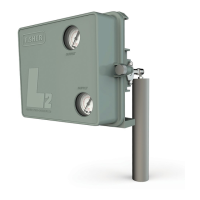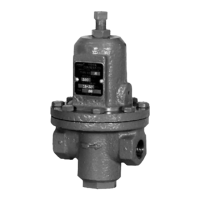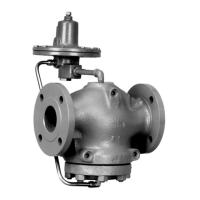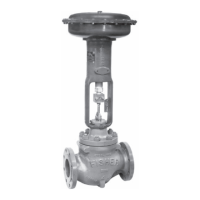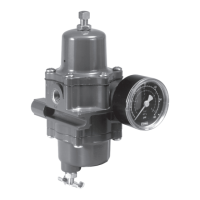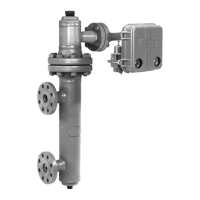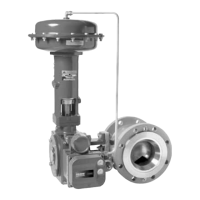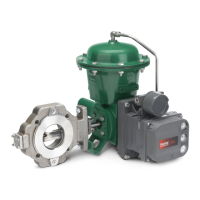4195KA, KB, KC, and KS Controllers
Instruction Manual
Form 5207
April 2007
6-23
W4195 / IL
BELLOWS BRACKET
(KEY 31)
LINK 4 ADJUSTMENT
SCREW HEADS
Figure 6-17. Position of Link 4 Adjustment Screws
5. Adjust the proportional band to 5 percent
REVERSE and move the set point indicator to the
process scale upper limit.
6. Disconnect link 1 from the Bourdon tube and
move the process pointer to the process scale lower
limit. Tape the process pointer in this position.
7. Apply the correct supply pressure to the
controller. The output of the controller should be
within 0.14 bar (2 psig) of the supply pressure. If not,
adjust flapper leveling screw 1 (the screw nearest
the nozzle) until the output is within 0.14 bar (2 psig)
of supply pressure.
8. Loosen the two adjusting screws on link 4.
Connect the free end of the link to the bellows
bracket and allow the link to find its free length.
9. Tighten the two adjusting screws on the link.
10. Raise link 4 out of the hole in the bellows
bracket (key 31) and ensure that it drops back into
the hole under its own weight. If not, repeat steps 8
and 9.
11. For a controller with reset, adjust the reset
adjustment to 0.01 minutes per repeat. The rate
adjustment (4195KC) should remain in the OFF
position.
12. The controller output should be within 0.14 bar
(2 psig) of the supply pressure. If not, adjust flapper
leveling screw 1 (the screw nearest the nozzle) until
the output is within 0.14 bar (2 psig) of supply
pressure.
13. Remove the tape from the process pointer and
connect link 1 to the Bourdon tube.
14. Perform the controller calibration procedures
and, if necessary, the appropriate remote set point
calibration procedure in Section 3, 4, or 5.
Bourdon Tube Travel Stop Installation
and Adjustment
WARNING
Refer to the Maintenance WARNING
on page 6-1.
Note
The process indicator should be
calibrated before installing or
adjusting travel stops. Refer to the
appropriate process indicator zero
and span calibration procedure in
Section 3, 4, or 5.
Refer to figure 6-18 for adjustment locations and
figure 7-1 for key number locations.
The lower travel stop is necessary only if the
operating range lower limit is greater than 0 bar or 0
psig (elevated zero) For example: The process scale
limits may be 0 to 300 psig, but the range of
operation is 150 to 300 psig. In this example the
elevated zero is 150 psig and the lower travel stop
would be adjusted for 5 percent of the process scale
span less than 150 psig
(150 − (0.05 X 300) = 135 psig).
1. Remove the two screws (key 6), and lift off the
proportional band indicator cover (key 36).
2. Set the proportional band between DIRECT and
REVERSE.
3. Install the upper travel stop (key 73) or upper and
lower travel stops (keys 73 and 74) with the machine
screws (keys 75 and 76). Do not tighten the
machine screws (key 75) that secure the upper
travel stop. If only the upper travel stop is installed,
go to step 10. Otherwise proceed with step 4.
4. If the operating range lower limit is 0 bar (0 psig),
and a lower travel stop is installed, adjust the lower
travel stop adjustment so it does not interfere with
the Bourdon tube. Tighten the lower travel stop
adjustment lock nut and proceed to step 10. If the
operating range lower limit is other than 0 psig
(elevated zero), perform steps 5 through 15.
5. If the process scale lower limit is other than 0
psig, adjust the process pressure to 5 percent of the
process scale span less than the operating range
lower limit (see example at the beginning of this
procedure).
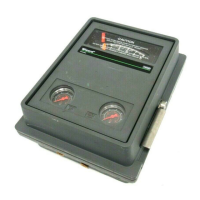
